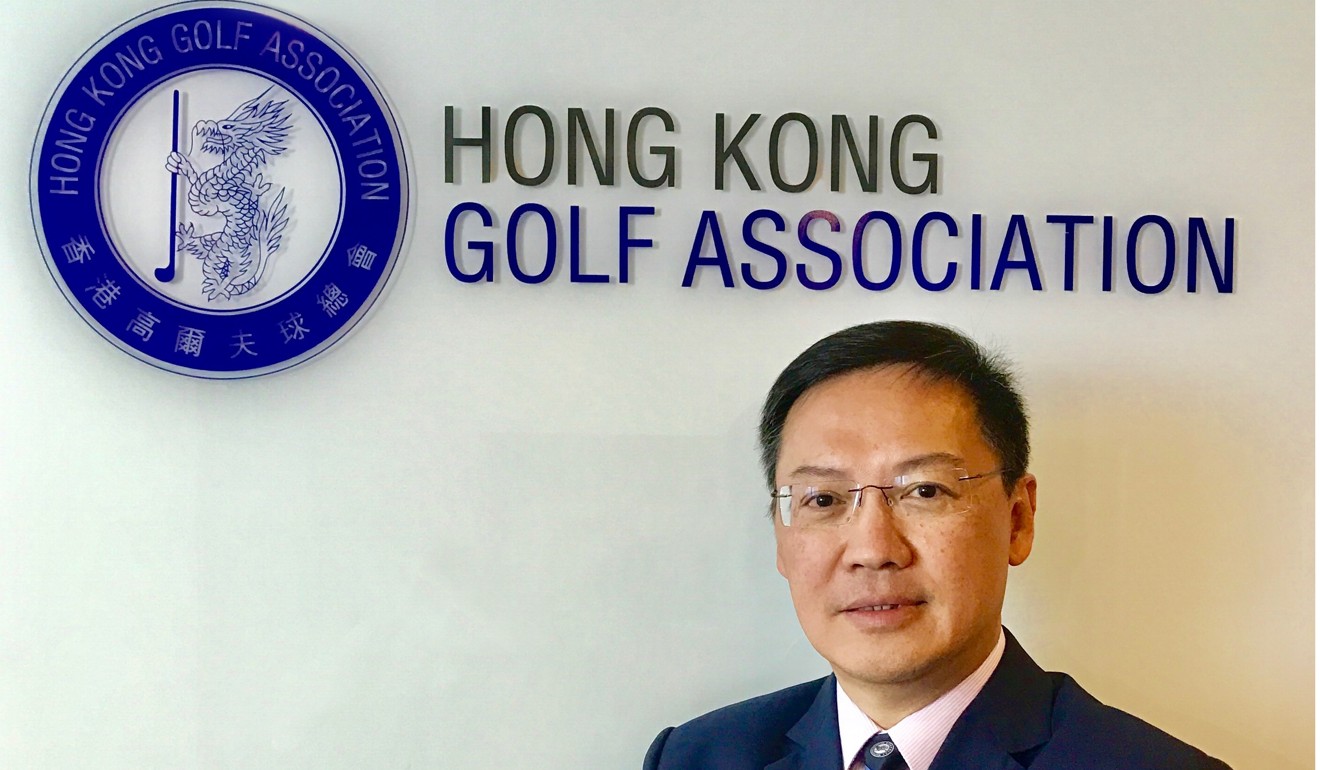
Don’t pit sports against housing, Hong Kong Golf Association head says as task force eyes Fanling course
Comments come in wake of government consultancy report suggesting development of part or whole of site to provide land for more homes
Don’t pit golf against the city’s need for more homes, the Hong Kong Golf Association head said on Tuesday as he urged the government to look for land elsewhere to deal with the housing shortage.
The association’s CEO, Danny Lai Yee-june, said building new flats on part of a 170-hectare golf course in Fanling would have a “big impact” on the sport’s local development.
“Taking away a part of the golf course is like taking one stick away from a pair of chopsticks. What am I going to do with just one chopstick?” Lai said on a radio programme on Tuesday morning.
“As a Hongkonger, I understand the need for housing in Hong Kong, but why is there a need to pit golf, or sports, against housing? I totally disagree with this,” he said.

The golf course in Fanling, run by the Hong Kong Golf Club, hosts a number of local and international tournaments year round, most prominently the Hong Kong Open, which has been held there for 59 years.
“For the past 50 years, we have been relying on the support from private golf clubs to provide a venue for training and competitions, especially as we do not have a formal, dedicated training ground provided by the government,” Lai said.
Some 70 per cent of all local competitions are held at the two courses run by HKGC – in Fanling and Deep Water Bay – but especially in Fanling, according to Lai.
Residents want public housing built on Hong Kong golf course site, survey finds
Lai said razing the Old Course, a 107-year-old part of the Fanling course, would affect “tens of thousands of people who golf there”.
Hong Kong has six golf courses, only one of which – located at Kau Sai Chau, an island off the coast of Sai Kung – is a public golf course that requires no membership fees. The other golf courses are leased by the government to private clubs at a nominal rent. The biggest golf courses, Fanling and Kau Sai Chau, are the only two sites equipped with three 18-hole golf courses.

In Fanling, international competitions are held mainly on two of the three courses – the New Course and the Eden Course. However, golfers say the Old Course, which was recommended for development in the report, played an integral role for sportsmen and sportswomen.
“Just like how tennis players have different types of courts to play on, the grass at the Old Course is different from the New Course and the Eden Course. During summer, when the weather is hotter, conditions at the Old Course are actually more suitable for competitions,” said Martin Liu Wai-ho, an amateur golfer who won the Mizuno Hong Kong Closed Amateur Championship in 2014.
“With the different weather and limitations, it’s actually very important for golfers to be able to train and know how to play and adapt to different courses,” Liu said.
Conflict of interest fears loom over Hong Kong golf course takeover for housing as advisers revealed to be club members
The two development options will be put up for public consultation, along with dozens of other land supply options in April.
The golf course is not Hong Kong’s last piece of land. If we bulldoze this piece of history, this piece of culture, there’s no turning back.
Both Lai and Liu stressed that golf was not just a “rich man’s sport”, as the Fanling course was open to the public for reservations during weekdays. They pointed out that the site had helped nurture professionals like Tiffany Chan Tsz-ching, who represented Hong Kong at the Olympics in 2016.
According to government regulations, sports facilities operated by private clubs are required to be open to outside bodies for a minimum of 50 hours a month.
HKGC said the utilisation rate of their courses by non-members was up to 40 per cent last year.
Lai said the authorities should consider other options to boost land supply instead.
“Hong Kong can look to reclamation as a solution, just as Singapore and Macau have done … Why can’t we consider other options? Why should we start with a 100-year-old golf course?
“The golf course is not Hong Kong’s last piece of land. If we bulldoze this piece of history, this piece of culture, there’s no turning back. Our next generation might regret it,” he said.

